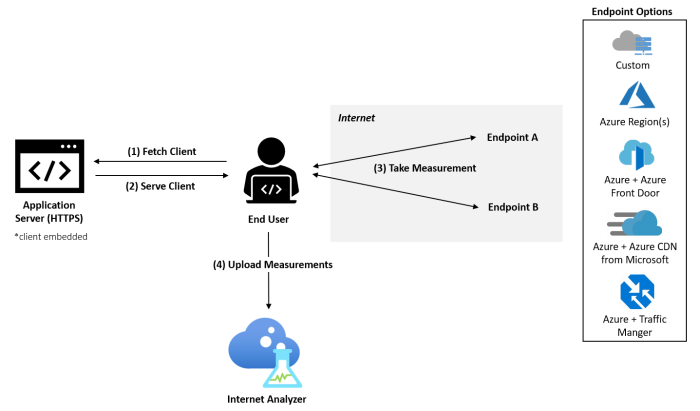Ignite 2019: Azure Internet Analyzer (Preview)
3 min. read
Published on
Read our disclosure page to find out how can you help Windows Report sustain the editorial team Read more

As we migrate more and more services to the cloud we are faced with the questions related to how our systems will perform in these new environments. Azure allows us the flexibility of hosting our services and applications across many regions which is very powerful and convenient. But selecting the best location for your systems still remains crucial to ensuring your customers are getting the best possible experience.
Azure Internet Analyzer is the perfect tool for that job. This client-side measuring platform allows you to quantify the performance impact your customers will experience based on your network and infrastructure configurations. By embedding a small JavaScript client into your application you can measure latency from various regions by running multiple side-by-side tests allowing you to evaluate the performance of your web application from an end user’s perspective.
What does that mean exactly? Let’s say your application mainly serves an audiences based in the continental United States, but you have some users reporting performance or latency issues with your systems in the northeast. By leveraging this new tool you can quickly make informed decisions as to what the best location for your application should be to provide a consistent experience your audience.
This system is still in preview and should not be used for mission critical or production environments at this point. Now that we got that disclaimer out of the way I can tell you its extremely easy to configure and use. There are three basic steps involved. You start by setting up a new Internet Analyzer resource in Azure, then installing the JavaScript client into your application. The final step is collecting the results and using them to find and address potential latency issues which could you be impacting your customers. How you tackle that problem is up to you. There are many approaches, one of the most comprehensive and effective is utilizing a CDN or Content Delivery Network, which Microsoft also offers. You can learn more about Azure CDN here.
When a user visits the Web application, the JavaScript client selects two endpoints to measure across all configured tests. For each endpoint, the client performs a cold and warm measurement. The cold measurement incurs additional latency beside the pure network latency between the user and endpoint such as DNS resolution, TCP connection handshake, and SSL/TLS negotiation. The warm measurement follows just after the cold measurement completes and takes advantage of modern browsers’ persistent TCP connection management to get an accurate measure of end-to-end latency.
There is a ton of news coming out of MS Ignite 2019, but this one is very exiting for me! Do you share your enthusiasm? Although others tools like it exist, do you find having this functionality as part of Azure’s offering appealing?








